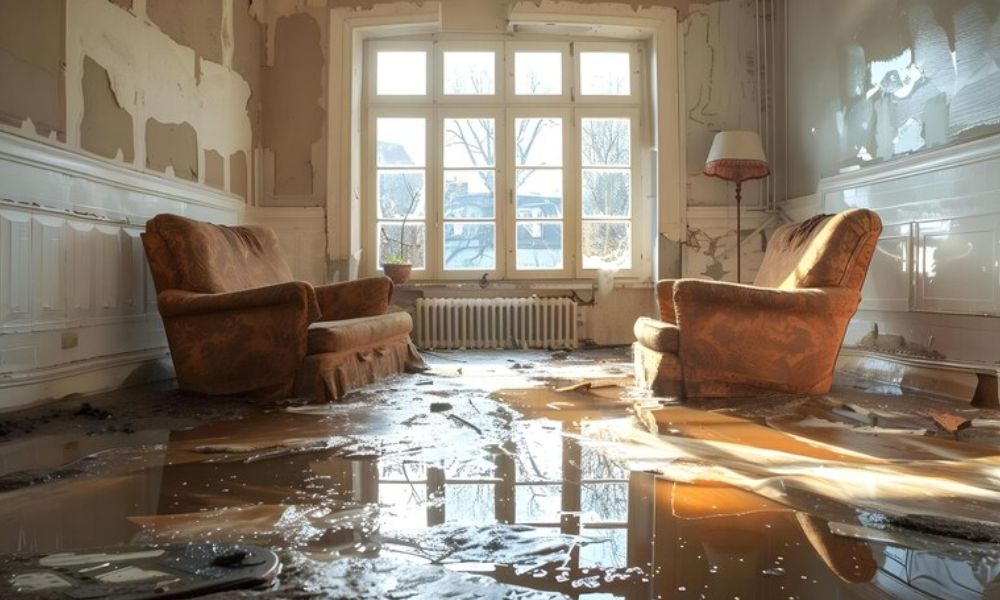Steps to Take After Water Damage Occurs
Water damage can occur at any time and often without warning—whether due to a burst pipe, flooding, a roof leak, or a malfunctioning appliance. The aftermath can be overwhelming, especially when you’re unsure what steps to take next. Knowing how to respond quickly and effectively can help minimize the damage and protect your home and belongings.
If you experience water damage in your home, acting fast is key. From securing safety to reaching out to professionals like lindstrom construction, understanding the necessary steps will ensure you reduce both short-term disruption and long-term costs.
1. Prioritize Safety First
Before doing anything else, evaluate the safety of the situation. Depending on the severity of the water damage, your home may pose serious hazards, such as electrical risks or structural instability. If water is near any electrical outlets or appliances, turn off the power at the breaker box to avoid electrocution. If the water damage is extensive, it may be safest to evacuate and wait for professionals to arrive.
Also, be cautious of contaminated water. Water from sewage backups or natural floods may contain bacteria, chemicals, or other hazardous materials. Always wear protective gear like gloves and waterproof boots if you must enter the affected area.
2. Stop the Source of the Water
Once you’re sure the area is safe, work quickly to stop the water source if possible. If it’s a leaking pipe, shut off the main water supply to your home. If it’s caused by a broken appliance, unplug it and address the supply line. Taking quick action here can significantly reduce the amount of damage done.
In cases of severe weather or external flooding, you may not be able to stop the water yourself. That’s when it’s critical to act fast with water removal and drying to prevent further saturation and mold growth.
3. Document the Damage Thoroughly
Before any cleanup begins, document all visible damage. Take photos and videos of affected areas, furniture, electronics, and any damaged personal belongings. This will be essential if you plan to file a homeowners insurance claim.
Make sure your documentation covers all affected areas and includes a description of when the damage occurred, the source of the water (if known), and the steps you’re taking. Keep all receipts from cleanup and restoration efforts to include in your claim.
4. Remove Excess Water and Begin Drying
Once documentation is complete, begin extracting the standing water. Use towels, mops, buckets, or a wet/dry vacuum if the water level isn’t too deep. The faster you begin drying, the better your chances of minimizing long-term damage and preventing mold.
Open windows, run fans, and use dehumidifiers to ventilate the area and speed up the drying process. It may take several days to fully dry the affected areas, depending on the extent of the water damage.
For more significant water issues, it’s important to bring in a professional water damage company that can handle proper extraction, drying, and sanitizing with commercial-grade equipment.
5. Move and Assess Your Belongings
After removing excess water, begin moving your belongings to a dry area. Start with the most valuable or sentimental items. Items like electronics, documents, photographs, and fabrics can be particularly vulnerable to water and should be handled with care.
Some items may be salvageable with proper cleaning and drying, while others—especially porous materials like carpeting and upholstery—might need to be discarded if they’ve been saturated for too long. Be sure to document what you discard for insurance purposes.
6. Prevent Mold and Secondary Damage
Mold can begin to grow within 24 to 48 hours in damp environments. Even after drying the surface, hidden moisture may remain behind walls or under flooring. Keep an eye out for musty odors, discoloration, or visible mold spots.
If any signs of mold appear, contact a certified mold remediation professional. They can test for spores, remove contaminated materials, and sanitize the area to prevent future outbreaks.
7. Begin Restoration and Repairs
Once your home is dry and safe, begin repairs to restore it to its original condition. This may include replacing drywall, repainting walls, repairing flooring, or restoring damaged plumbing or electrical systems.
Professional water damage restoration companies often provide complete reconstruction services, helping you return your home to pre-damage condition efficiently. This is especially helpful if the damage was widespread or structural components were affected.
Conclusion
Water damage is a serious issue, but taking immediate and informed action can drastically reduce its impact. From ensuring your safety to documenting damage and contacting restoration professionals, each step plays a vital role in the recovery process. Acting fast helps preserve your belongings, prevent mold, and reduce costly repairs.
Whether the water damage is minor or extensive, don’t hesitate to seek help from experienced professionals. Companies like Lindstrom Construction and trusted water damage restoration providers in your area have the expertise, tools, and knowledge to guide you through the cleanup and rebuild process—giving you peace of mind and helping restore your home as quickly as possible.




Post Comment